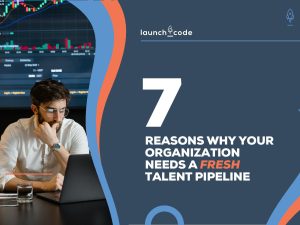To Buy or to Build: Architecting the Future of Customer Experience

In today’s competitive market, customer experience (CX) is a key differentiator that can determine the success or failure of a business. Companies are increasingly investing in technology solutions to enhance their customer interactions, streamline operations, and improve overall satisfaction. However, a critical decision arises: should they buy an off-the-shelf solution or build a custom platform tailored to their unique needs? This “buy vs. build” dilemma is not just a technical question but a strategic choice that shapes the future of customer experience.
In this blog, we’ll explore the pros and cons of buying versus building customer experience solutions, factors to consider when making this decision, and strategies for architecting a future-proof CX approach.
The “Buy vs. Build” Decision
The “buy vs. build” decision refers to whether a company should purchase a ready-made software solution from a vendor or develop a custom-built system in-house (or with the help of external developers). Each approach comes with its own set of advantages and challenges, and the choice depends on various factors, including business goals, budget, time-to-market requirements, and existing technological infrastructure.
Buying Off-the-Shelf Solutions
Buying an off-the-shelf solution means selecting a pre-built, commercially available software product to fulfill the company’s CX needs. These solutions are typically offered as Software-as-a-Service (SaaS) or licensed software and come with built-in features, maintenance support, and regular updates.
Pros of Buying:
- Speed to Market: Off-the-shelf solutions are ready for deployment, allowing businesses to quickly implement new capabilities and start enhancing the customer experience without a lengthy development process.
- Lower Initial Costs: Purchasing software generally involves lower upfront costs compared to building a custom solution, as there is no need to invest in a full development team.
- Proven Reliability: Established vendors often have mature products with proven reliability, security measures, and extensive customer support.
- Regular Updates and Enhancements: Software vendors typically release regular updates and add new features based on customer feedback, ensuring the product stays current with industry trends.
Cons of Buying:
- Limited Customization: Off-the-shelf solutions may not fully address specific business needs or integrate seamlessly with existing systems. Customization options can be limited, leading to compromises.
- Vendor Lock-In: Companies may become dependent on a vendor’s roadmap and support, which could be problematic if the vendor’s priorities change or if they discontinue the product.
- Cost Over Time: While the initial costs may be lower, subscription-based models can become expensive over time as licensing fees accumulate.
Building a Custom Solution
Building a custom solution involves designing and developing a platform from scratch (or significantly modifying existing systems) to meet specific customer experience requirements. This approach allows for a tailored fit and full control over the system’s features and functionalities.
Pros of Building:
- Full Customization: A custom-built solution can be designed to meet specific business requirements, allowing for greater flexibility and personalization.
- Better Integration: Companies can ensure that the platform integrates seamlessly with their existing technology stack, including legacy systems and unique business processes.
- Control and Ownership: When a company builds its own solution, it retains full control over the code, data, and feature roadmap, reducing dependency on external vendors.
- Competitive Differentiation: Custom solutions can offer unique features or capabilities that give businesses a competitive edge by catering specifically to their customers’ needs.
Cons of Building:
- Higher Upfront Costs: Developing a custom solution requires a significant initial investment in development resources, project management, and testing.
- Longer Time to Market: Building a custom solution from the ground up takes time, which could delay the implementation of new capabilities and affect business agility.
- Maintenance and Upgrades: Once the solution is built, the company is responsible for ongoing maintenance, updates, and potential technical debt, which could divert resources away from core business functions.
Factors to Consider in the Buy vs. Build Decision
The choice between buying and building a customer experience solution depends on several critical factors. Evaluating these factors can help businesses make an informed decision:
- Business Goals and Strategy
- If your primary goal is to quickly address customer pain points or adopt industry-standard features, buying an off-the-shelf solution might be the best route. On the other hand, if your business requires a highly differentiated experience to stand out in a competitive market, building a custom solution may be more suitable.
- Budget and Cost Analysis
- Assess the total cost of ownership (TCO) for both options, including upfront costs, maintenance, subscription fees, and any hidden expenses. While buying may appear less expensive initially, ongoing licensing costs can add up. Building requires a larger initial investment, but may be more cost-effective over time if it aligns with long-term goals.
- Time-to-Market Requirements
- Businesses that need to launch new capabilities rapidly may prefer buying an off-the-shelf solution. For companies with longer timelines and the ability to wait for a tailored solution, building may be more advantageous.
- Integration with Existing Systems
- Consider how well the new system will integrate with your existing technology stack. If integration is a critical requirement and existing systems are highly customized, building a solution that fits seamlessly may be necessary.
- Scalability and Future-Proofing
- Evaluate whether the solution will scale as your business grows. Purchased software may have limitations on scalability, while custom-built solutions can be designed with future growth in mind. However, building a future-proof custom solution also requires foresight and strategic planning.
- Internal Capabilities and Resources
- If your organization has a strong in-house development team or the ability to hire specialized developers, building a solution may be feasible. Otherwise, buying may be a more practical choice, especially for companies with limited technical expertise.
A Hybrid Approach: The Best of Both Worlds?
For many businesses, the choice between buying and building isn’t a binary one. A hybrid approach that combines off-the-shelf components with custom development can offer the best of both worlds. For example, a company might use an existing platform as a foundation and build custom features or integrations on top of it. This allows for rapid deployment while still accommodating unique requirements.
Architecting a Future-Proof Customer Experience Strategy
To ensure that your customer experience architecture remains resilient and adaptable over time, consider these best practices:
- Adopt a Modular Approach
- Design your CX architecture using modular components that can be easily swapped or upgraded without disrupting the entire system. This allows for flexibility in responding to changing customer needs and technology trends.
- Focus on Data Integration
- Customer data is at the heart of any CX strategy. Ensure that your systems can integrate and share data across platforms to create a unified customer view and drive personalized experiences.
- Prioritize User Experience (UX)
- Whether you choose to buy, build, or adopt a hybrid approach, ensure that the solution prioritizes a seamless and intuitive user experience. Poor UX can negate the benefits of even the most advanced technology.
- Plan for Continuous Improvement
- Customer needs and market conditions change constantly. Implement a process for regularly reviewing and improving your CX systems, using customer feedback and performance data to guide updates.
- Invest in Training and Change Management
- New technology often requires staff training and changes in workflows. Invest in training programs to ensure employees can effectively use new tools and deliver a consistent customer experience.
Conclusion
The decision to buy or build a customer experience solution is complex and depends on a variety of factors. There is no one-size-fits-all answer; instead, companies must weigh the pros and cons of each option and consider their specific goals, resources, and constraints.
By carefully evaluating the “buy vs. build” dilemma and adopting a strategic approach, businesses can architect a future-proof customer experience that not only meets current needs but also adapts to future demands. Ultimately, the right choice will empower organizations to deliver exceptional customer experiences and stay ahead in a competitive market.
Whether you choose to buy, build, or take a hybrid path, the key is to remain flexible, customer-focused, and open to evolving your strategy as technology and customer expectations continue to change.







